10 Best Productivity Tools to Help Hybrid and Remote Teams Thrive
Many hybrid and remote employees enjoy the benefits of working from home, but 64% of managers lack the right tools to manage their remote workers. Part of this challenge stems from the fact that there are multitudes of remote-friendly tools available, and new technology changes the way teams work almost every day.
Choosing the best productivity apps and software for your hybrid or remote team presents a whole new challenge. To help you discover the best productivity tools, the Loom team scoured the web to find 10 remote work-friendly apps that simplify tasks and improve efficiency.
Why are productivity tools essential for asynchronous work?
For remote and hybrid work environments, asynchronous communication is key. Coworkers best collaborate across geographic locations and time zones with productivity tools that:
- Allow team members to see what everyone is working on.
- Make information easily accessible and foster open communication.
- Promote flexible work schedules and let employees work autonomously.
- Minimize distractions and encourage deep work by reducing the need for meetings and real-time communication.
Robust productivity tools encourage good work habits and employee engagement across hybrid and remote teams. When you provide the necessary technology for working from home, remote employees are twice as likely to engage.
1. Loom

A screen recording tool, Loom fosters efficient asynchronous communication and team collaboration. Teams using Loom capture feedback, team processes, onboarding steps and demos, effectively replacing online meetings and increasing transparency.
Loom’s power lies in its focus on personalized video communication. Teams convey messages rich with body language, tone of voice, and facial expressions in addition to essential on-screen information. Video recipients can then respond directly to Loom videos with emoji reactions and comments.
Key features:
- Easy async communication: Record your screen, webcam, and audio in one click.
- Team resource hub: Use your Loom Library as a single source of truth that team members can access when needed.
- Built-in editing features: Polish your video without lifting a finger with Loom’s Edit Video by Transcript, Live Rewind, and Trim & Stitch tools, plus Loom AI features.
Pros:
- Replaces lengthy and confusing written guides or email chains.
- Improves knowledge-sharing across remote and hybrid teams.
- Enables efficient communication and collaboration without the need for time-consuming meetings.
Cons:
- Limits the number of recordings you can store on the free plan.
Pricing:
Loom offers a free plan for individuals, and paid plans for teams start at $12.50 per user per month when paid annually.
Try Loom for Free Today2. 1Password

Asynchronous communication is great—until you need a password from someone on your team. 1Password solves this problem while maintaining security by allowing you to effortlessly share account passwords with approved coworkers.
Key features:
- Secure password storage: Protect passwords in a secure vault, rather than a Google Sheet, and easily share them with teammates.
- Team security booster: Help teammates improve security with a password generator and multi-factor authentication.
- Browser- and device-friendly: Add it to your current workflows with multiple integrations.
Pros:
- Reports on weak and reused passwords to help teams improve security.
- Improves productivity with automated login management, including autofill.
- Allows admins to control who can access which passwords.
Cons:
- Costs more than other password managers.
- Requires a learning curve for employees unfamiliar with password management tools.
Pricing:
1Password offers a 14-day free trial, and small business plans start at $7.99 per user per month.
3. Toggl
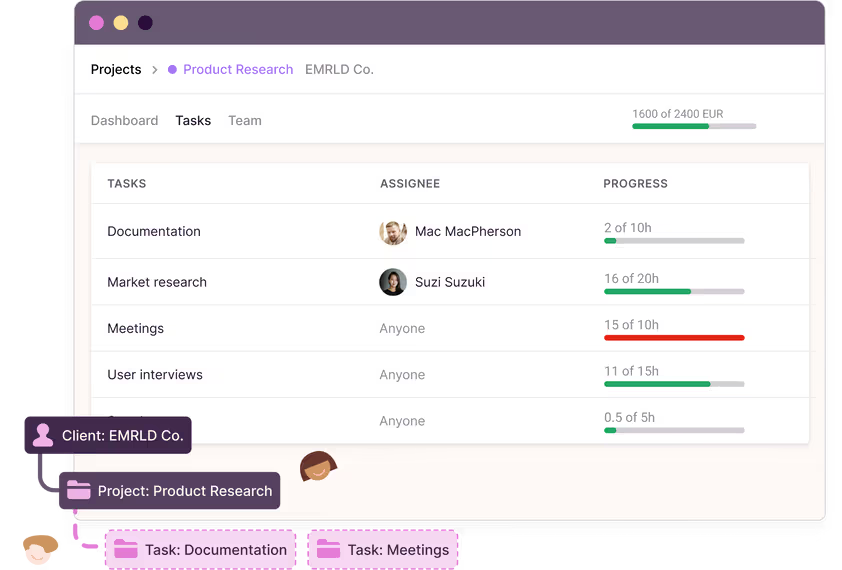
Need to keep tabs on your team’s workload or help a junior teammate practice time management skills? Toggl’s time-tracking software can help. It’s known for comprehensive reports that offer insight into how individuals spend their time during the workday.
Key features:
- Bird’s eye-view reporting: Creates comprehensive, customizable reports covering time usage, workload, and more.
- Team task view: Allows managers to see how and when employees tackle tasks.
- Accountability partner: Visualizes the entire team’s workload, so coworkers can hold each other accountable or offer assistance.
Pros:
- Doubles as project and task management software.
- Empowers teams to balance their workloads and avoid burnout.
- Streamlines reporting for client billing, project tracking, and more.
Cons:
- Adding tracked time to past projects may be cumbersome.
- Lacks a way to notify users who aren’t tracking their time.
Pricing:
Toggl offers a free plan for up to five users, and paid plans start at $9.00 per user per month when paid annually.
4. Brain.fm
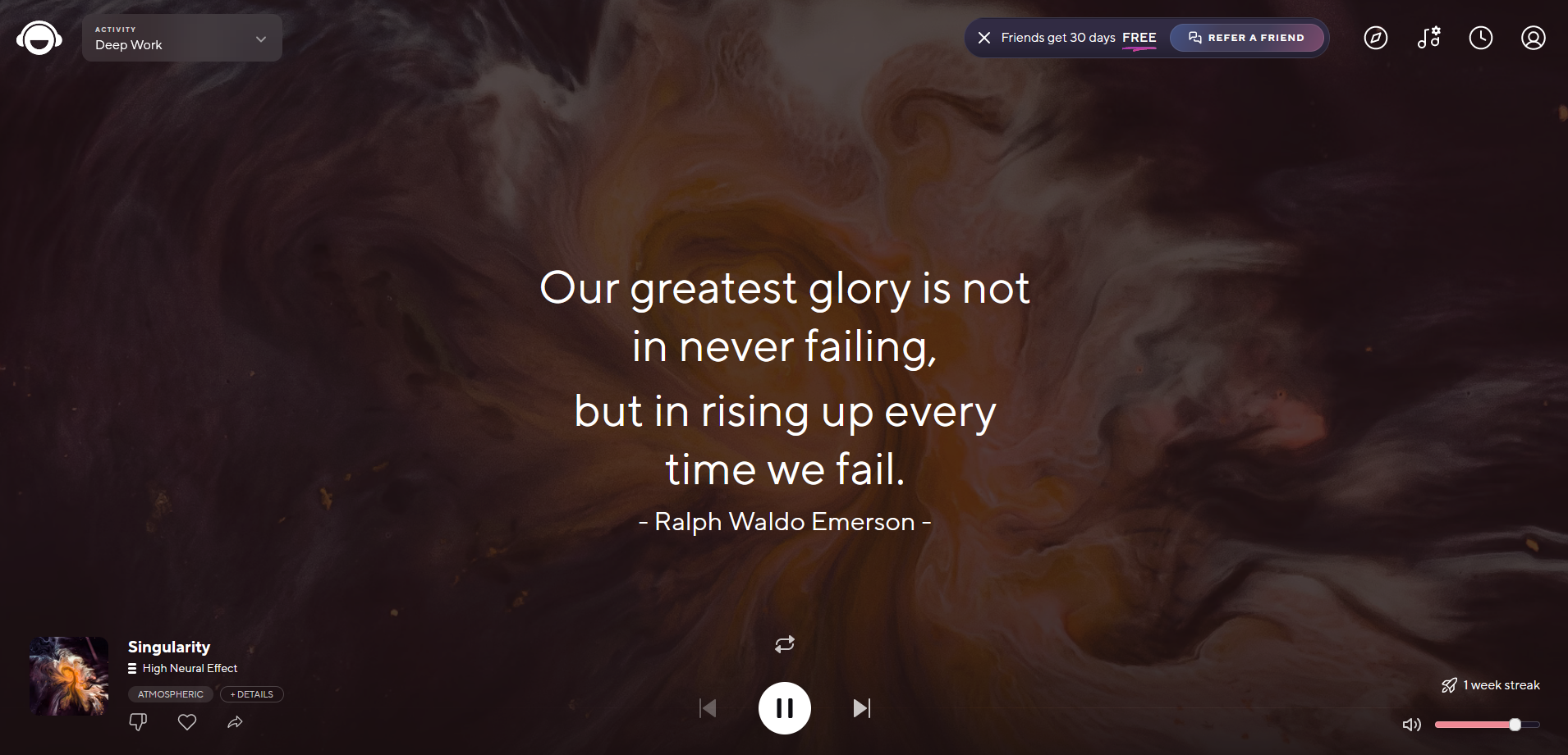
You’ve probably heard of lo-fi or binaural beats, but have you heard of Brain.fm? This music app uses science to improve your focus. The creators of Brain.fm have run numerous tests, including EEGs, to study the effects of human-created music on brain function, resulting in a positive and productive musical experience.
Key features:
- Neuroscience-backed productivity: Stimulates your brain through music to increase focus.
- Variety of music genres: Customize your playlist so you choose what you listen to, whether it’s acoustic or downtempo grooves.
- Mood booster: Use Brain.fm to relax or meditate during stressful workdays or personal time.
Pros:
- Improves concentration and focus with unobtrusive music.
- Customizes listening experiences based on user feedback and preferences.
- Supports Pomodoro and other productivity methods with a built-in timer and intervals.
Cons:
- Requires a monthly or yearly subscription fee.
Pricing:
Brain.fm offers a 7- or 14-day free trial, and paid plans start at $5.83 per month when you pay for a yearly subscription.
5. Fellow
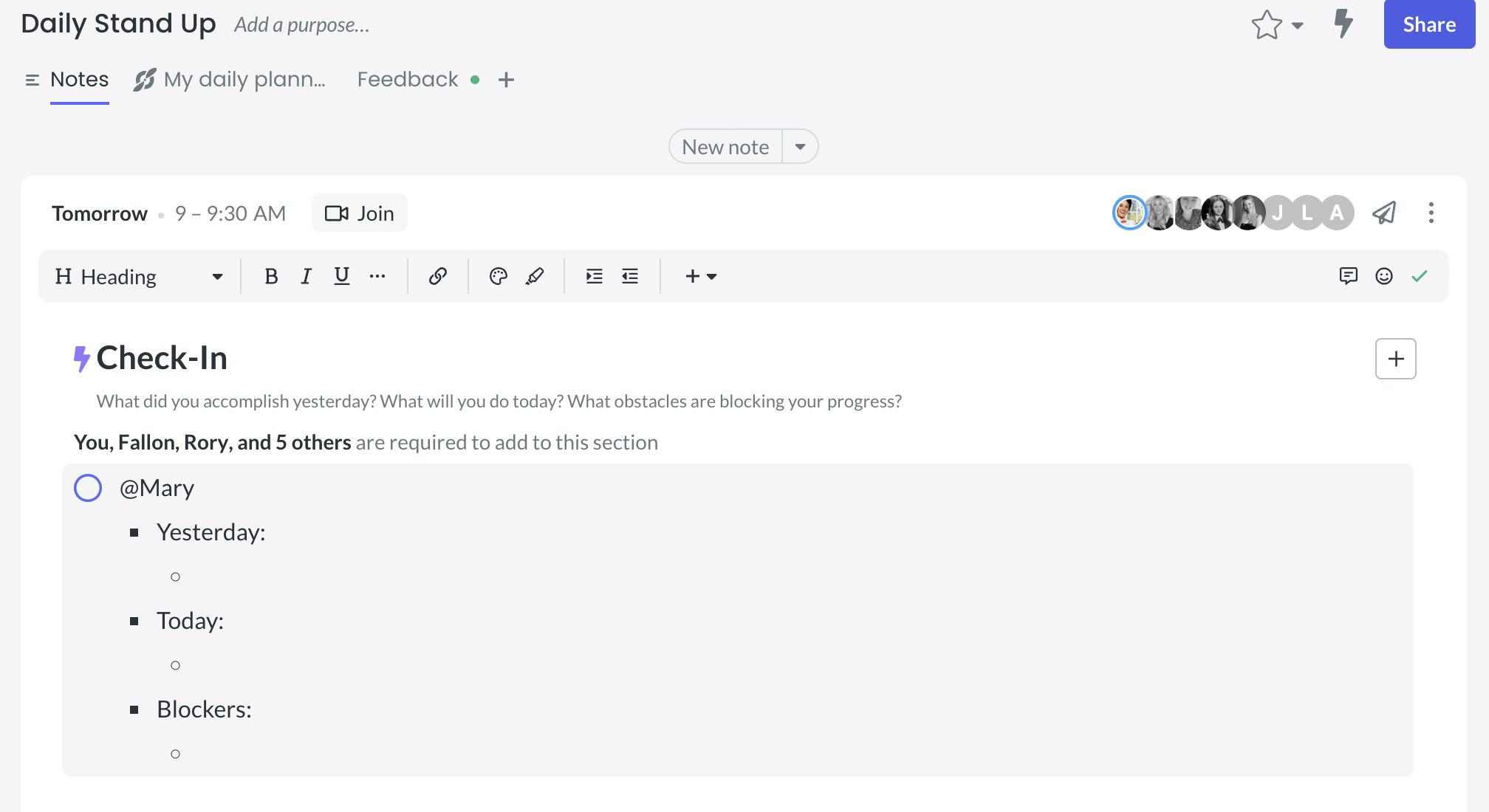
Keep meetings on task and on time with Fellow. It uses AI to transcribe meetings and turn them into action items, or users can create collaborative agendas and templates to save time. Fellow works for all types of meetings, from one-on-ones to company-wide all-hands.
Key features:
- Templatized meetings: Use pre-built templates to save time and cover every critical topic.
- AI-powered notes: Let AI do the note-taking while teammates focus on discussion.
- Integrate, don’t separate: Connect Fellow to 50+ apps, including Asana, Google Calendar, and Loom.
Pros:
- Improves productivity with meeting automation on paid plans.
- Allows remote workers to add comments and emojis to meeting agendas.
- Keeps teams accountable with AI to-do lists.
Cons:
- Lacks advanced formatting options for meeting agendas and notes.
- Limits users to Mac, Windows, or Chrome.
Pricing:
Fellow offers a free forever plan, and paid plans start at $7.00 per user per month when billed annually.
6. Fantastical
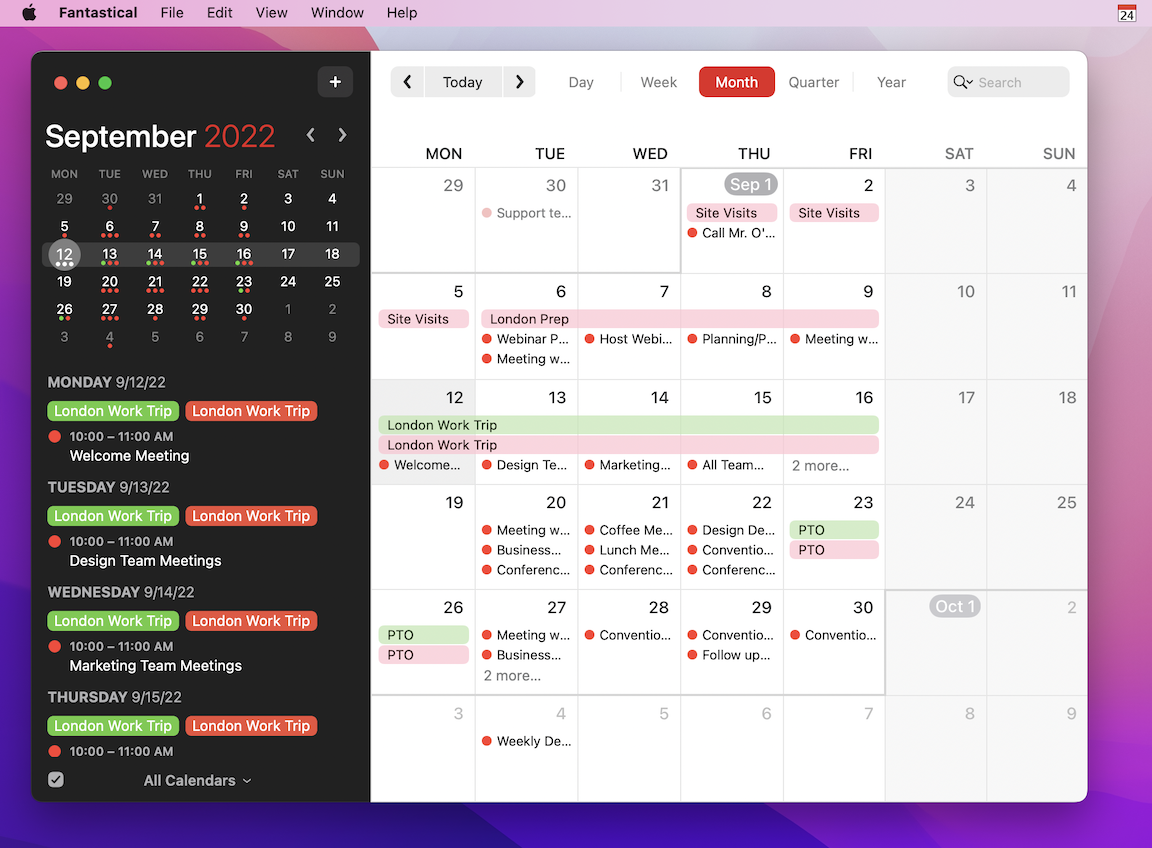
Beautify and streamline your work calendar with Fantastical. This Mac and iOS calendar app includes a handful of features for organizing your schedule around your availability and protecting your focus time. It also supports task tracking and event templates to improve team efficiency.
Key features:
- Coordinated concentration: Filters different calendars based on your current focus.
- Easy bookings: Share meeting links in Messages, email, and other apps when you have a free spot in your schedule.
- Easily join video calls: Tap on an event to join the call—whether you use Zoom, Google Meet, Skype, or another online video conferencing tool.
Pros:
- Displays time zones to help distributed teams communicate during work hours.
- Combines duplicate events automatically to reduce calendar clutter.
- Imports existing calendars and keeps them synced.
Cons:
- Works only with Apple devices.
- Lacks advanced time management and calendar features.
Pricing:
Fantastical offers a 14-day free trial, and the paid plan costs $4.75 per user per month when billed annually.
7. Clean Email

Cluttered inboxes can easily become distractions, but Clean Email helps employees reclaim control. It screens senders, uses smart filters and rules to identify and organize messages, and has a mass unsubscribe tool to make Inbox Zero effortless.
Key features:
- Auto-clean: Sort emails into groups with built-in filters and rules that suggest appropriate folders and actions.
- One-click unsubscribe: Remove yourself from mailing lists or stop getting sales pitches with easy unsubscribe, pause, and read later options.
- Email screener: Keep spam from sneaking into your inbox and ensure emails from trusted senders don’t end up in Spam.
Pros:
- Cleans company email inboxes with just a few clicks.
- Manages emails in bulk and automates email organization tasks.
- Organizes emails with advanced rules based on status, sender, and even how long an email sits in your inbox.
Cons:
- Requires a potentially expensive subscription.
- Lacks email collaboration features offered by similar apps.
Pricing:
Clean Email offers a free trial, and paid plans start at $2.50 per month for one account when paid annually.
8. nTask

Task management software nTask comes with unique features to assist hybrid and remote teams. These include collaborative chat, time tracking, a meeting scheduler and notes, as well as project risk management tools.
Key features:
- Project management toolbox: Keep tabs on projects, individual tasks, meetings, and more with all of nTask’s features.
- Custom reports: Check overall team status with customizable reports showing project effort, progress, and more.
- Team connection: Share project updates, ask questions, and store documents with collaboration features.
Pros:
- Keeps teams of all sizes organized and aligned on project tasks and progress.
- Provides meeting management options, including templates, tasks, and agendas.
- Sends automated alerts and reminders to keep you on top of budgets and due dates.
Cons:
- Requires a learning curve to successfully use all features.
- Limits file storage to 100 MB on the free plan.
Pricing:
nTask offers a free version, and paid plans start at $3.00 per user per month when paid annually.
9. Reclaim.ai
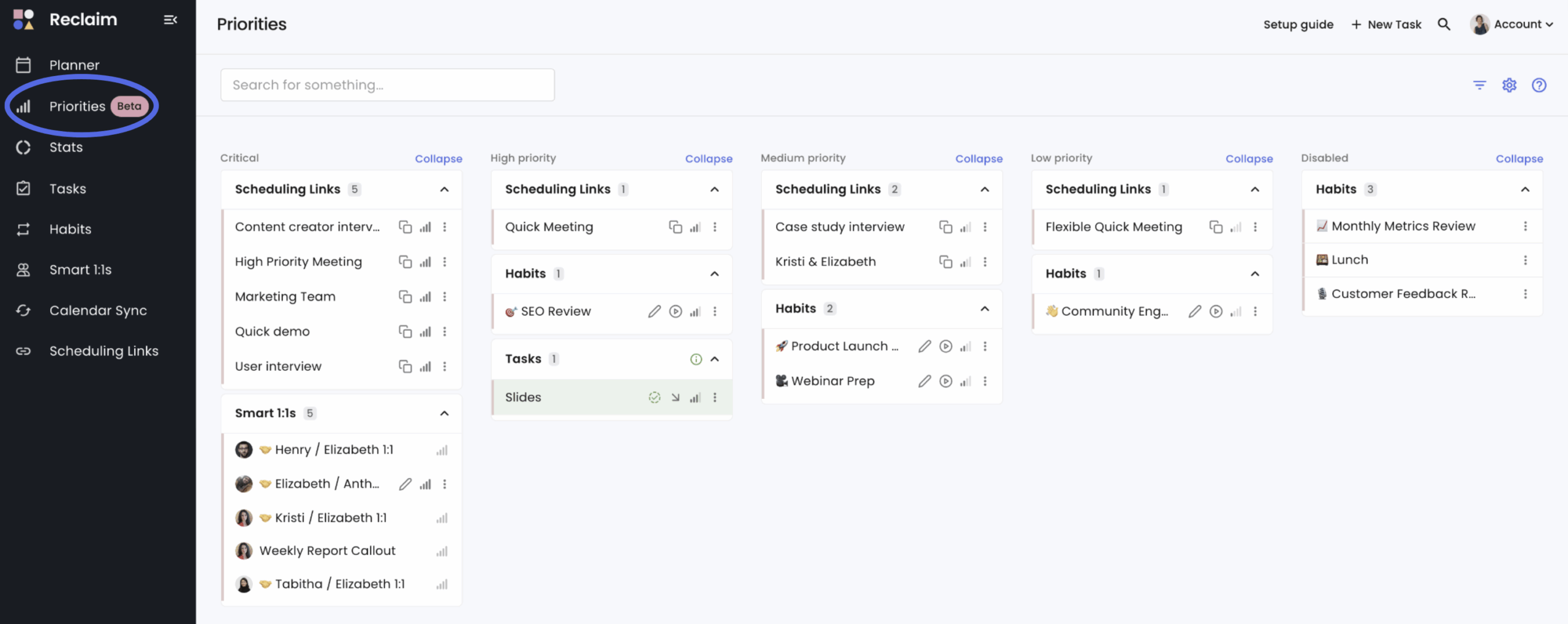
An AI-powered calendar app, Reclaim.ai optimizes your schedule to maximize your focus time, including suggesting the best times for meetings. Users add in travel time, task due dates, and more to knock out their to-do list while achieving work-life balance.
Key features:
- Optimized schedules: Use AI to schedule tasks, habits, breaks, and meetings at the best possible times.
- Connected apps: Work with project management tools like Asana, Todoist, and Jira.
- Synced Slack statuses: Display when you’re heads-down or in a meeting with automatic Slack status updates.
Pros:
- Tracks productivity to provide helpful insights on deep work versus meeting time.
- Auto-schedules one-on-ones at the optimal time for both attendees.
- Helps you set meeting priorities with smart scheduling links.
Cons:
- Works only with Google Calendar.
- Requires a learning curve to customize AI scheduling features.
Pricing:
Reclaim.ai offers a free forever plan, and paid plans start at $8.00 per user per month when paid annually.
10. Freedom
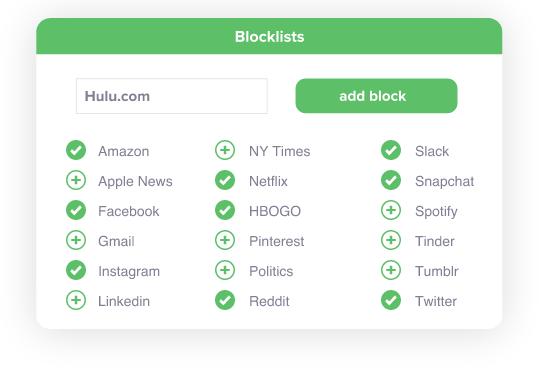
Freedom keeps you focused by blocking digital distractions. Block specific sites and apps or block an entire genre, such as messaging apps or shopping sites. Setting a schedule in Freedom ensures blocked sites and apps open back up after work hours.
Key features:
- Scheduled focus time: Block distractions on certain days or at certain times.
- Granular block list: Get picky and block specific websites, apps, and types of content, or create a custom list.
- Locked down: Maintain focus with Locked Mode, even when your willpower needs a boost.
Pros:
- Works with multiple devices to promote focus time no matter where you work.
- Fosters team-wide focus sessions that can boost productivity.
- Offers a free browser extension.
Cons:
- Requires users to set up and maintain focus sessions.
- Costs a lot compared to other productivity tools.
Pricing:
Freedom offers a free version of its app, and paid plans start at $99.00 per month for teams of 10 to 100.
How to combine the best productivity apps for maximum efficiency
Choose productivity tools that seamlessly complement your existing workflow, without conflicts or overlap. After all, these apps should make remote work easier, not harder.
Start with the following productivity and collaboration tools to help your remote team tackle tasks efficiently:
- Messaging and video conferencing platforms like Slack and Zoom
- Project management tools like Trello and Airtable
- Document management apps like Dropbox and Google Workspace
- Time management and calendar apps like Toggl and Fantastical
- Asynchronous communication tools like Loom and Fellow
It’s also important to assess ease of use. Employees are less likely to adopt and use tools with a steep learning curve.
Shave meeting time and boost productivity with Loom
Most remote employees find themselves more productive while working from home. But the downsides of working outside the office hinder team collaboration.
The best productivity tools foster asynchronous communication while making it easier for remote and hybrid teams to complete tasks. They cultivate knowledge-sharing and effortless feedback to keep work-from-home employees aligned on goals and expectations, providing a foundation for a remote work strategy that’s built on trust.
Loom offers an efficient way to share updates, feedback, and team knowledge asynchronously. Remote teammates can quickly capture their screens and webcams to share personalized video messages. This cuts down on inefficient meetings and email chains, giving employees more time to focus on projects.
Reduce meeting time and boost remote team productivity with Loom.
Try Loom for Free Today
